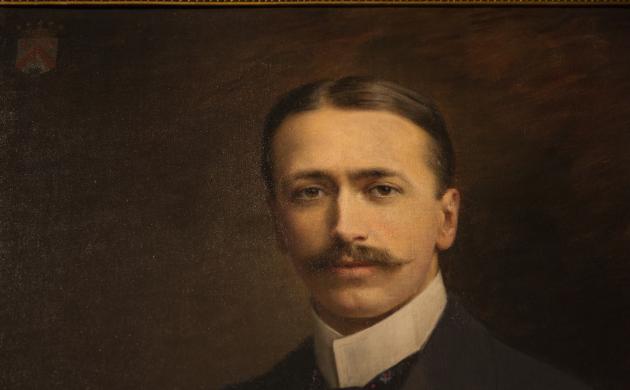Horses, flowers and photos
We don’t really know very much about Fritz Mayer van den Bergh (yet). He was born into a wealthy family, remained unmarried and lived with his mother on Lange Gasthuisstraat and in the spacious Pulhof Castle.
He loved thoroughbred horses and hunting. And flowers and plants, too: he even won prizes for his home-grown dahlias. He moved in aristocratic and bourgeois circles in Antwerp and the surrounding area. In his day, the official language there was French, and costumed balls were a favourite activity.
We also know that Fritz was a keen photographer: we are currently investigating which photographs in the museum archive were taken by him.
In Bruegel costume
Fritz Mayer van den Bergh participated in public life in Antwerp. He was a member of the fabric committee of St Augustine’s Church and an honorary member of the Scalden, a cultural association in which he met people active in the art world, including writers, musicians and artists.
In 1894, the whole of Antwerp was enthralled by the ‘Old Antwerp’ world exhibition. The 16th-century city centre was even reconstructed for the occasion. Fritz Mayer van den Bergh joined in the festivities, wearing clothes from Bruegel’s time; his mother financed the reconstruction of a building called ‘De Drie Koningen’ (‘The Three Wise Men’).
German legends
Fritz Mayer van den Bergh also translated medieval sagas and fairy tales from German. He did so into Dutch – an unusual choice in his French-speaking, aristocratic milieu. His mother arranged for the work to be published posthumously in 1902, with illustrations by his friend Edmond van Offel.
In the preface, Fritz Mayer van den Bergh writes: ‘These legends belong to the early days of a people so closely related to us that there is no clear limit between its vernacular and ours.’
What we don’t know (yet)...
As we have seen, much is still unknown about Fritz Mayer van den Bergh. Together with scientific partners, the museum is currently conducting research into his life and the environment in which he lived. This will undoubtedly throw new light on late-19th-century Antwerp and high society there at that time.



